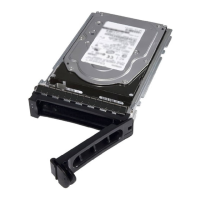whenever you run either the
srvadmin-services.sh start or srvadmin‑services.sh restart commands, or when you restart
the system (during which the Server Administrator Instrumentation Service is started.)
Server Administrator installation blocks the installation of Server Administrator packages if an appropriate version of the
OpenIPMI device driver is not currently installed on the system. However, it is still possible, though not typical, that you
can uninstall or replace a sufficient version of the OpenIPMI device driver after Server Administrator has been installed.
Server Administrator cannot prevent this.
To account for a user uninstalling or replacing a sufficient version of the OpenIPMI device driver after Server
Administrator has been installed, the Server Administrator Instrumentation Service checks the OpenIPMI device driver
version whenever it is started. If a sufficient version of the OpenIPMI device driver is not found, the Server Administrator
Instrumentation Service degrades itself so that it does not provide any of the IPMI-based information or functionality.
Primarily, this means that it does not provide any probe data (for example, fans, temperatures, and voltage probe data.)
Installing Managed System Software
This section explains how to install managed system software using the following installation options:
• Using the
srvadmin-install.sh shell script
NOTE
:
If you have downloaded the managed system software installer (available as a .tar.gz
file), the srvadmin-
install.sh shell script is present as setup.sh in the root directory.
• Using the RPM command
Related Links:
Deployment Scenarios for Server Administrator
Prerequisites For Installing Managed System Software
The prerequisites are:
• Log in as
root.
• The running kernel must have loadable module support enabled.
• The
/opt directory must have at least 250 MB of free space, and the /tmp, /etc, and /var directories must each
have at least 20 MB of free space.
• Install the ucd-snmp or net-snmp package that is provided with the operating system if you use SNMP to
manage the server. If you want to use supporting agents for the
ucd-snmp or net-snmp
agent, you must install
the operating system support for the SNMP standard before you install Server Administrator. For more
information about installing SNMP, see the installation instructions for the operating system you are running on
the system.
NOTE
: When installing RPM packages, to avoid warnings concerning the RPM–GPG key, import the key with a
command similar to rpm --import <OM DVD mountpoint>/SYSMGMT/srvadmin/linux/RPM-
GPG-KEY
• In case of Red Hat Enterprise Linux 6.2 and above and SLES 11 SP2, install the wsman and sblim packages from
the operating system DVD. See, To install the wsman and sblim packages
• Install all the prerequisite RPMs required for successful installation.
If the system had VMware ESX (version 4.0 or 4.1) factory-installed, Red Hat Enterprise Linux (versions 5.x and
6.0), or SUSE Linux Enterprise Server (version 10 and 11), see the Dependent RPMs for Remote Enablement
section for information on any RPMs that you need to manually install prior to installing managed system
software. Typically, you may not need to manually install any RPMs.
51

